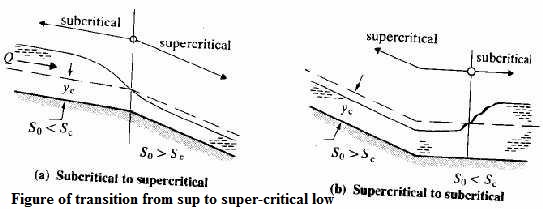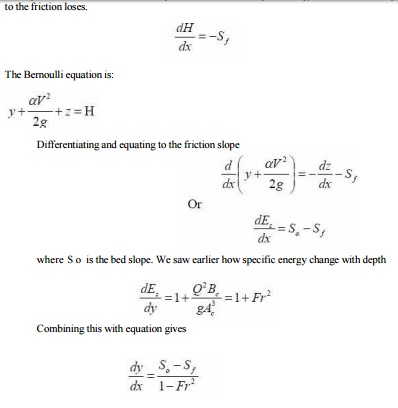Chapter: civil : Applied Hydraulic Engineering: Gradually Varied Flow
Transitions between sub and super critical flow

Transitions between sub and super critical flow
If sub critical flow exists in a
channel of a mild slope and this channel meets with a steep channel in which
the normal depth is super-critical there must be some change of surface level
between the two. In this situation the surface changes gradually between the
two. The flow in the joining region is known as gradually varied flow.
This situation can be clearly
seen in the figure on the left below. Note how at the point of joining of the
two channels the depth passes through the critical depth.

If the situation is reversed and
the upstream slope is steep, super critical flow, and the down stream mild,
sub-critical, then there must occur a hydraulic jump to join the two. There may
occur a short length of gradually varied flow between the channel junction and
the jump. The figure above right shows this situation:
Analysis of gradually varied flow
can identify the type of profile for the transition as well as the position
hydraulic jumps. The equations of gradually varied flow. The basic assumption in
the derivation of this equation is that the change in energy with distance is
equal to the friction loses.
This is the basic equation of
gradually varied flow. It describes how the depth, y , changes with distance x
, in terms of the bed slope S o , friction S f and the discharge, Q , and
channels shape (encompassed in Fr and S f ).
Equations
1.25 and 1.26 are differential equations equating relating depth to distance.
There is no explicit solution (except for a few special cases in prismatic
channels). Numerical integration is the only practical method of solution. This
is normally done on computers, however it is not too cumbersome to be done by
hand.

Related Topics